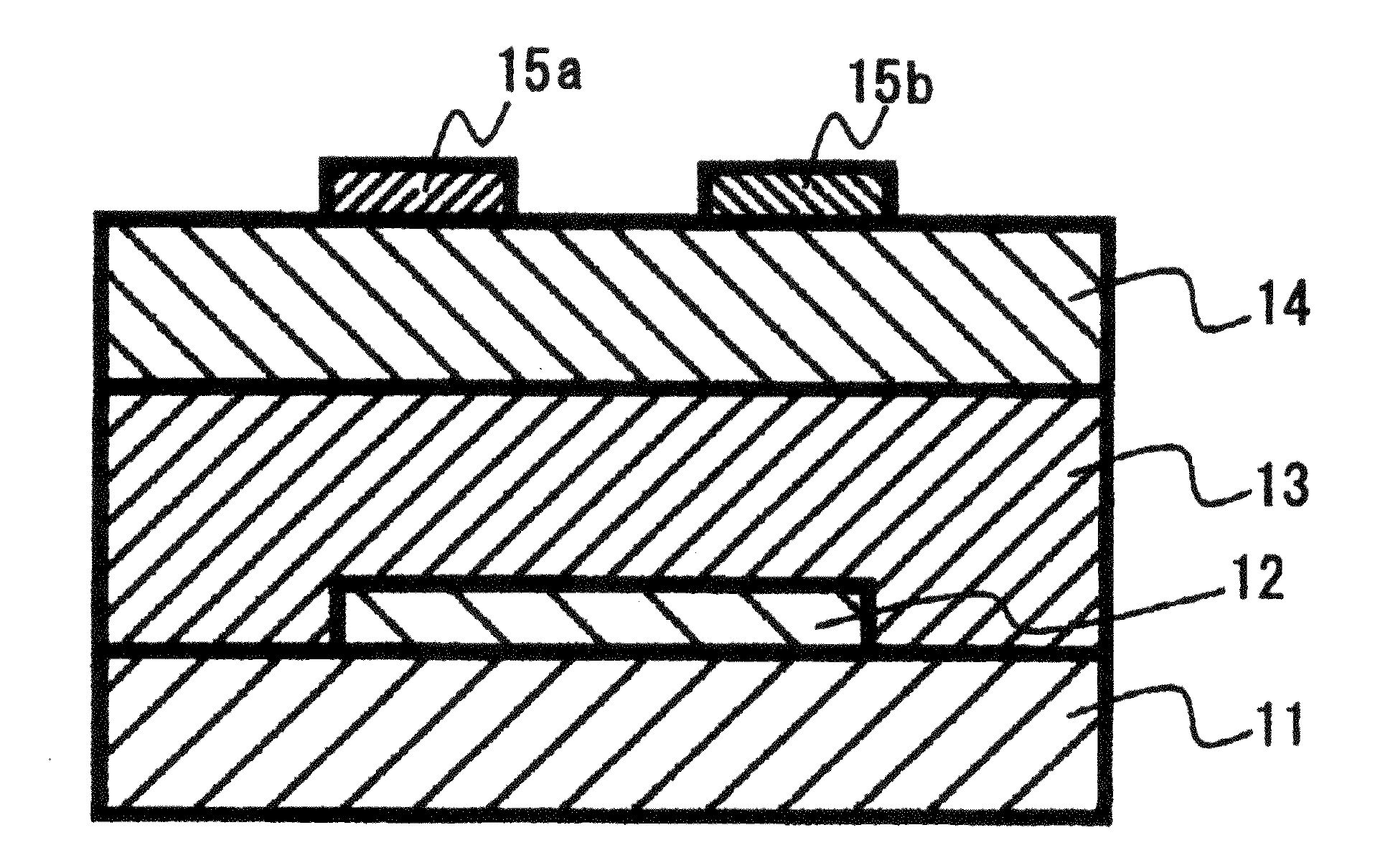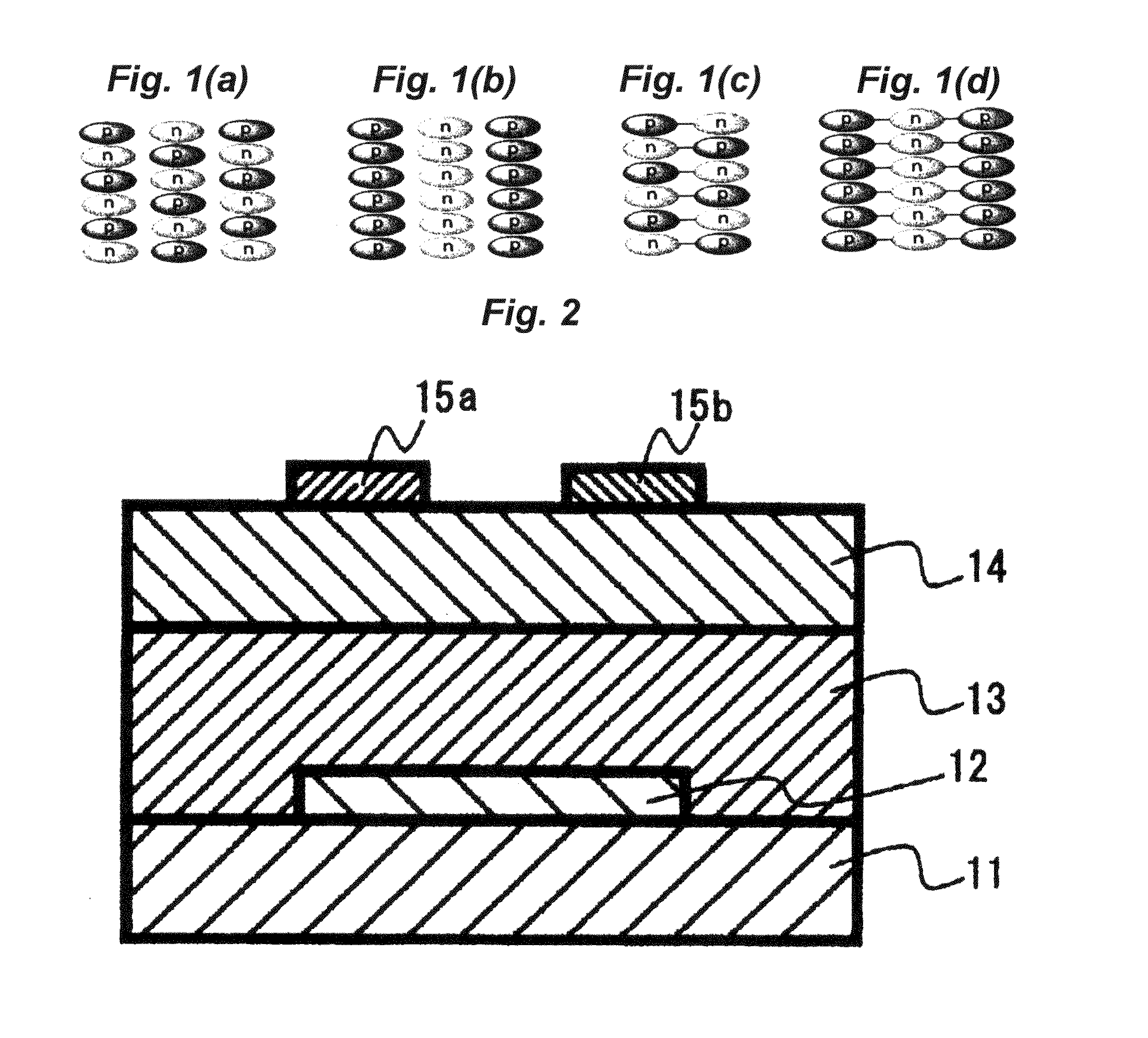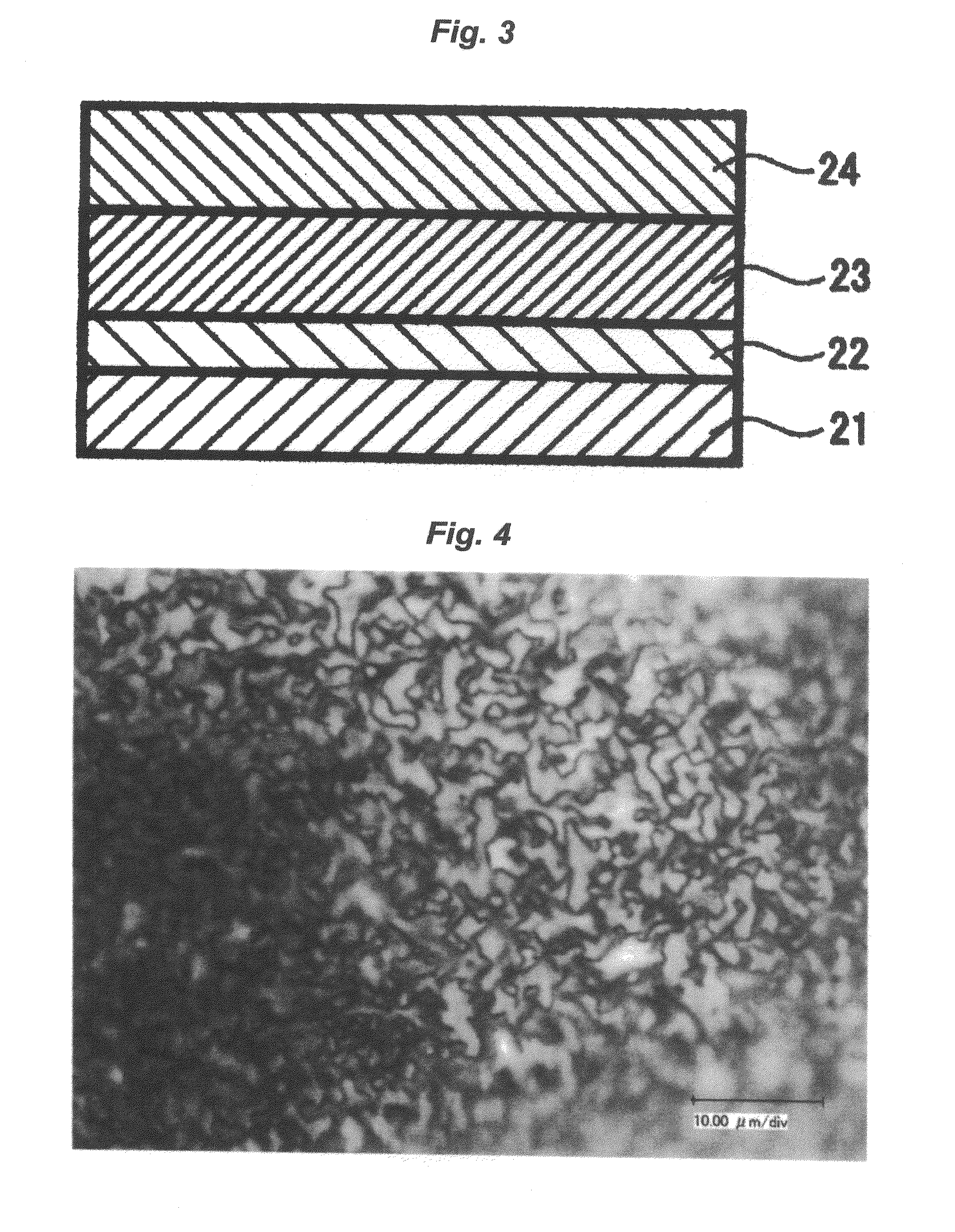Liquid crystalline organic semiconductor material and organic electron device
a technology of organic semiconductors and semiconductor materials, which is applied in the direction of naphthalimide/phthalimide dyes, non-metal conductors, anthracene dyes, etc., can solve the problems of low orientation/alignment order of molecule orientation/alignment, and the conventional electronic devices using inorganic semiconductor materials such as silicon do not meet the requirements
- Summary
- Abstract
- Description
- Claims
- Application Information
AI Technical Summary
Benefits of technology
Problems solved by technology
Method used
Image
Examples
example 1
(Liquid Crystallinity)
[0179]The exemplified compound 2 was heated to 300° C. on a quartz substrate, and then cooled to room temperature. A polarizing microscope was used to observe the compound under a cross nicol condition. As a result, a texture as shown in FIG. 4 was observed. From this fact, it was ascertained that the exemplified compound 2 exhibited liquid crystallinity at room temperature.
[0180]The exemplified compound 2 was measured by DSC and observed with the polarizing microscope. As a result, it was observed that the compound was changed from a liquid crystal phase to an isotropic liquid crystal phase at about 252° C. when the compound was heated.
example 2
(Characteristic of Organic Thin-Film Transistor)
[0182]The exemplified compound 2 (1 mg) was dissolved into chloroform (1 mL), and the solution was drop-cast onto a FET-property-measuring substrate to yield a FET-property-measuring sample having an even thickness of 500 nm or less. The used FET-property-measuring substrate was a bottom-contact type substrate (its source and drain electrodes were each made of chromium / gold arranged in a comb form (gate width W=100000 μm, and gate length L=100 μm)) illustrated schematically in FIG. 5; its insulator film was made of SiO2 (film thickness: 200 nm); and its substrate was made of silicon). The FET characteristic was measured with a semiconductor parameter analyzer (trade name: 4156C, manufactured by Agilent Co,) to which a semiautomatic prober (trade name: AX-2000, manufactured by Vector Semiconductor Co., Ltd.) was connected, under normal pressure in a nitrogen atmosphere (in a glove box). A result of the examination or observation of the ...
example 3
(Characteristic of Organic Thin-Film Photoelectric Conversion Device)
[0184]A glass substrate (2.5 cm×2.5 cm) having thereon a patterned ITO electrode was washed with ultrasonic waves in isopropyl alcohol, and then dried. Furthermore, in order to remove any organic pollutants on the ITO electrode surface, the substrate was treated with UV ozone for 30 minutes. Next, the ITO substrate was spin-coated (at 4000 rpm for 60 seconds) with a solution of PEDOT (poly(3,4-ethylenedioxythiophene)) / PSS (polystyrenesulfonic acid) in water (Baytron P (standard product)), and then the whole was dried at 120° C. for 10 minutes to form a hole-transporting buffer layer having a film thickness of about 50 nm. The film thickness was measured with a probe-used thickness meter (trade name: DEKTAK 6M, manufactured by ULVAC, Inc.) [the same matter will be correspondingly applied to the following description]. Next, a 1.0 mg / mL solution of the exemplified compound 2 in chloroform was drop-cast onto the buffe...
PUM
| Property | Measurement | Unit |
|---|---|---|
| phase transition temperature | aaaaa | aaaaa |
| thickness | aaaaa | aaaaa |
| thickness | aaaaa | aaaaa |
Abstract
Description
Claims
Application Information
 Login to View More
Login to View More - R&D
- Intellectual Property
- Life Sciences
- Materials
- Tech Scout
- Unparalleled Data Quality
- Higher Quality Content
- 60% Fewer Hallucinations
Browse by: Latest US Patents, China's latest patents, Technical Efficacy Thesaurus, Application Domain, Technology Topic, Popular Technical Reports.
© 2025 PatSnap. All rights reserved.Legal|Privacy policy|Modern Slavery Act Transparency Statement|Sitemap|About US| Contact US: help@patsnap.com



